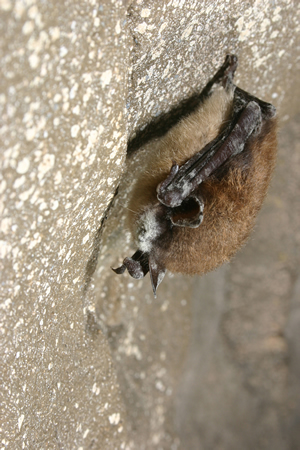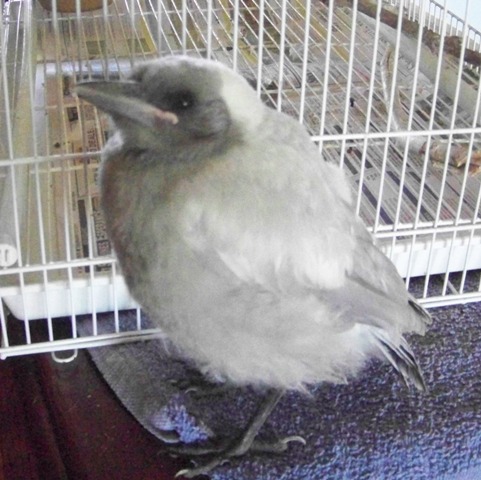Submitted by Gitie on 3 November, 2011 - 14:11
News Release from USGS (26 October, 2011)
The appropriately named fungus Geomyces destructans is the cause of deadly white-nose syndrome (WNS) in bats, according to research published today in the journal Nature. The study by U.S. Geological Survey scientists and partners, conducted at the USGS National Wildlife Health Center in Madison, Wisc., provides the first direct evidence that the fungus G. destructans causes WNS, a rapidly spreading disease in North American bats.
|

Credit: Al Hicks, NY Dept. of Environmental Conservation
|
“By identifying what causes WNS, this study will greatly enhance the ability of decision makers to develop management strategies to preserve vulnerable bat populations and the ecosystem services that they provide in the U.S. and Canada,” said Anne Kinsinger, USGS Associate Director of Ecosystems.

Submitted by Gitie on 1 November, 2011 - 11:49
 By Belinda Elbourn
By Belinda Elbourn
When Darren and I lived just west of Ceduna in South Australia we were very lucky to have shared our lives with 2 very special crows.
The first one to arrive on our door step was Camry, at first Camry was very shy little bird.
But after a day or two soon became a very demanding, cheeky loud little bird.
He spent the first couple of months in our enclosed back veranda.
As we had a huge enclosed fruit tree cadge (Darren and Camry are standing in it in the top photo) we thought it would be best for him to live out there, plenty of room to fly and hide.
Camry soon became very close to Darren, if was to go out to the cadge to feed him he would hide in the orange tree and would not come out.

Submitted by Gitie on 6 October, 2011 - 15:36
 The recent outbreak of the potentially deadly hendra virus is a cause of great concern to horse breeders and farmers alike. According to the Department of Primary Industries, although the virus can be transmitted from horses to humans, found in bats, there is no evidence that it can be transmitted directly to humans. Flying foxes are critical to the environment and a protected species. Culling is not only cruel but also ineffective. (Ref: Flying Foxes and Hendra Virus; The role of flying foxes in Hendra virus)
The recent outbreak of the potentially deadly hendra virus is a cause of great concern to horse breeders and farmers alike. According to the Department of Primary Industries, although the virus can be transmitted from horses to humans, found in bats, there is no evidence that it can be transmitted directly to humans. Flying foxes are critical to the environment and a protected species. Culling is not only cruel but also ineffective. (Ref: Flying Foxes and Hendra Virus; The role of flying foxes in Hendra virus)
There are many effective steps people can take in reducing the risk of horses and people getting infected. See:
Reducing the Risk of Hendra Infection in Horses
Reducing the Risk of Hendra Infection in People
Flying foxes are the only flying mammals and perform the quintessential task of pollinating and dispersing seeds of many native plants. Many trees especially those with white and green fruits rely only on flying foxes for pollination and dispersal of seeds. Losing our flying foxes would also mean losing a vast range of our native plants.
Flying foxes are also responsible for nutrient regeneration and nutrient cycling within the ecosystem, (Ref: Living With Wildlife) by providing large quantities of natural fertiliser across the landscape. They also create gaps in canopies enabling ground- dwelling plants to get more sunlight and rain.

Submitted by Gitie on 3 October, 2011 - 10:52
Belinda rescued this gorgeous white-backed baby magpie. White-backed magpies are found mostly in Western Australia and South Australia. Here along the Eastern side of Australia, we only get black-backed magpies. Occasionally a white backed magpie from South Australia migrates to our region, like Bertie and his sister.


Submitted by Gitie on 19 August, 2011 - 15:34
Pages


 T
T







